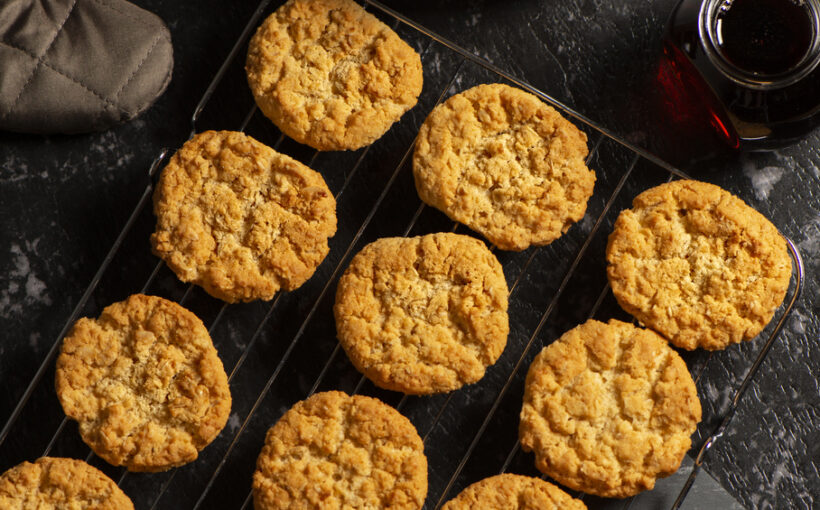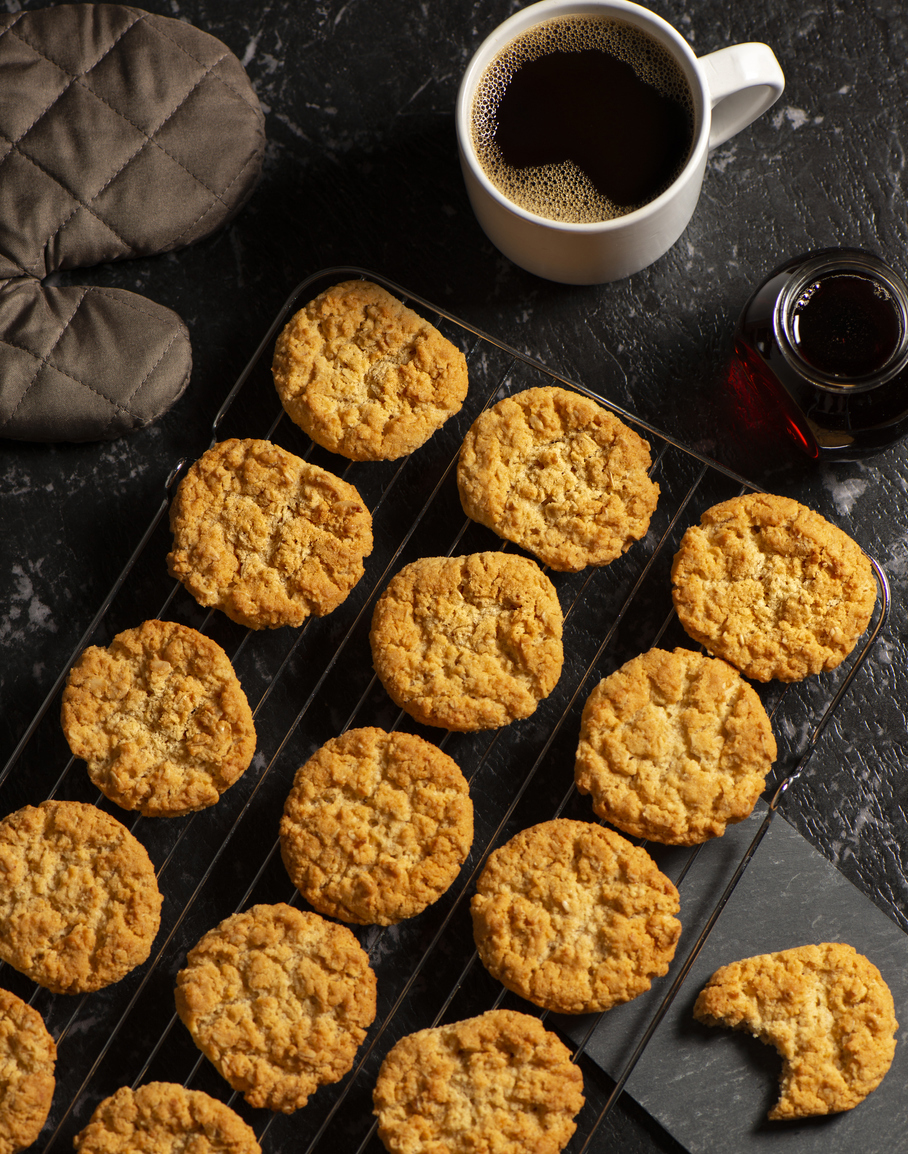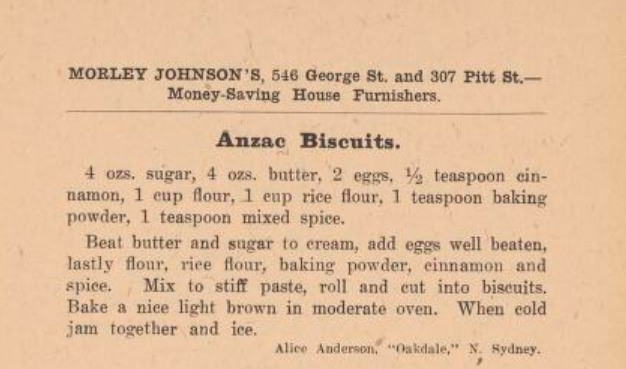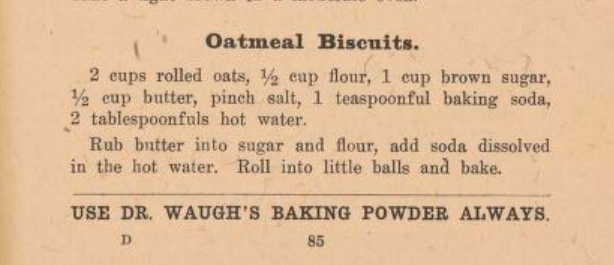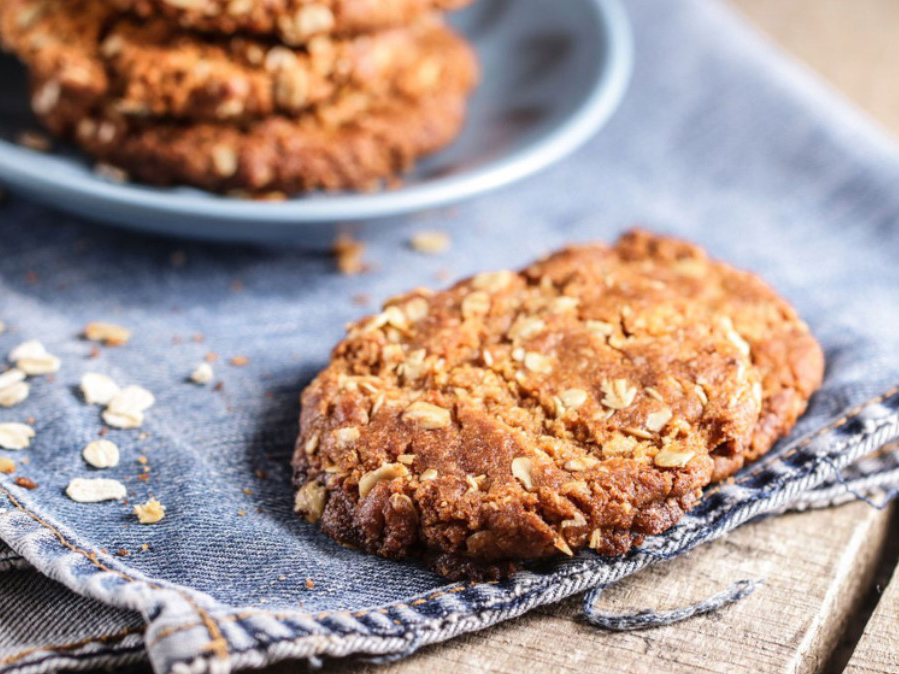Anzac Day is an important time to pause and remember those who died and suffered for our country and freedoms in World War I.
The day comes with many traditions, including making, buying and eating Anzac biscuits, which are made from common pantry items such as oats, flour, sugar, butter and golden syrup.
But where did the idea of the biscuits come from? And why were they made?
READ MORE: Anzac Day trading hours: What will and won't be open
9news.com.au spoke to an expert to learn the full history of the Anzac biscuit.
Did soldiers eat Anzac biscuits?
Some research suggests it is a myth that soldiers in Gallipoli ate Anzac biscuits, others experts believe they did.
Australian War Memorial historian Meghan Adams told 9news.com.au the topic had caused confusion.
"It's likely Australians (and New Zealanders) serving in Gallipoli would have eaten something like an Anzac biscuit, but it probably wouldn't have been known as an Anzac biscuit as such," Adams said.
"It was popular during the First World War to send some treats to men serving away from home as a way to sort of supplement their rations and give them a little taste of home," she said.
"And things like golden syrup, oats, flour were common pantry staples at that time."
Adams said the ingredients, which didn't include eggs, meant the biscuits didn't go bad quickly so they were ideal to send.
READ MORE: Your complete guide to Anzac Day Dawn Services around the country
Were Anzac biscuits rations?
There has been confusion about what could be defined as an Anzac biscuit.
"Soldiers at this time were issued as part of their standard ration something that was a biscuit-like substitute, kind of a substitute for bread."
These ration biscuits were sometimes known as an Anzac biscuit, Anzac tile or Hard Tack biscuit, but did not taste anything like what we eat today, causing confusion.
Adams said the Hard Tack rations were almost inedible in their regular state and they were so hard some soldiers wrote letters on them and posted them home.
Hard Tack biscuits at their most basic were made out of flour, water, salt and sugar and manufactured by Arnott's.
They were eaten with bully beef (tinned corned beef), rice, jam, cocoa, tea and sometimes bread.
Some soldiers reported breaking their teeth when eating it.
How was the Anzac biscuit recipe created?
The term Anzac biscuit became popular after April 1915, when women would bake sweet goods to fundraise for war memorials and the returned soldiers and their families.
"There were lots of different recipes that were named after the Anzacs as a patriotic gesture," she said.
A photo of a recipe from 1917 shows the biscuits were made differently from the biscuits we know today – with ingredients such as jam, icing and spices.
READ MORE: Australia's public holidays for 2024 and 2025: Make the most of your annual leave
Another recipe from 1917 called oat biscuits is a lot closer to the recipe for Anzac biscuits we know today.
Coconut started being added to some Anzac biscuit recipes in the 1930s.
"Even throughout the Second World War, you still do see things being called Anzac biscuits that are not what we know as Anzac biscuits," Adams said.
"So it did take a little bit of time for the Anzac biscuit to be cemented with those specific ingredients and for that to be the traditional and only Anzac biscuit recipe."
Can the recipe for Anzac biscuits be adjusted?
The short answer is no – not if the biscuits are to be called Anzac biscuits.
The Anzac biscuit recipe has been protected by the Department of Veterans' Affairs in their guidelines for the use of the word Anzac.
Commercial organisations wishing to use the word Anzac to sell a product must have it approved by the department.
"The use of the word Anzac in the commercial production and sale of Anzac biscuits is usually approved, however, the biscuits must not substantially deviate from the generally accepted recipe and shape and must be referred to as Anzac Biscuits or Anzac Slice," the guidelines said.
If the recipe deviated from its substantial form and included something like chocolate or fruit, it would not be able to have Anzac in its name.
Some commercial biscuit applications that have been rejected by the department include choc chip Anzac biscuits, Anzac cheesecake, Anzac muffin and Anzac sandwich.
READ MORE: What would happen if King Charles were to abdicate?
The recipe is allowed to be adjusted for dietary reasons, so regular flour could be replaced with gluten-free flour, for example.
"I think it's a really a treasured part of Australia's wartime past and a bit of a symbol of national pride," Adams said.
"They've got a really long history and I think it's great that today people still enjoy making them and eating them.
"I think a lot of students and schools around this time of year get the chance to make Anzac biscuits and learn a little bit about what that means.
"It invites people to engage with our nation's past."
Can it be called an Anzac cookie?
One thing that's not up for debate is whether the Anzac biscuit can be called a cookie.
"Oh, no, no, no, that's an American term," historian Adams said.
"It's definitely always an Anzac biscuit."
The guidelines specifically state that it cannot be called an Anzac cookie.
What is the official recipe?
The basic ingredients listed on the Australian Army's website are below.
- rolled oats
- sugar
- plain flour
- coconut
- butter
- golden syrup or treacle
- bi-carbonate of soda
An official recipe for both the Hard Tacks Anzac tiles and Anzac Biscuits can be found on the Australian War Memorial website here.
